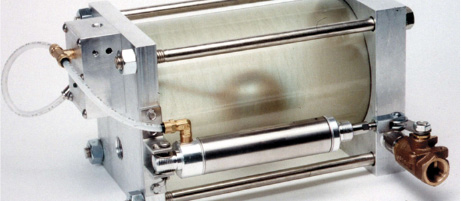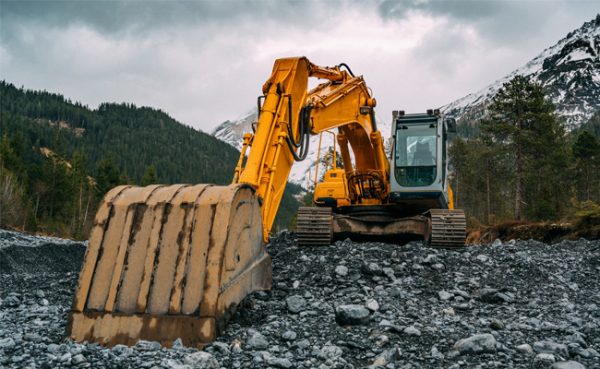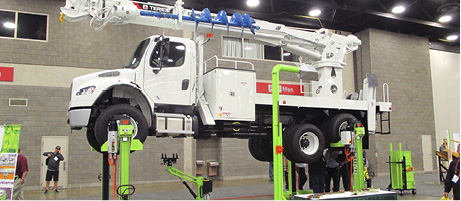Conductor Face-Off: Hose Versus Tube
What do lifting chains, bladder-type accumulators, and hydraulic hoses all have in common? Well, they typically have only one mode of failure—and that’s catastrophic. One minute they’re working as they should and the next thing you know, they’ve failed.
Oh sure, hoses can leak from around their ferrules and show obvious signs of abrasion, both of which are early warning signs that a change-out would be prudent. But even under these conditions, estimating their remaining service life is virtually impossible.
The Trouble With Hose
Beyond the fact that their service life is finite and difficult to estimate, other disadvantages of hydraulic hoses when compared to tube include the following:
- They expand and stretch under pressure. This flexing requires extra volume and adds to machine cycle time.
- They typically have a limited operating temperature range.
- Their requirement for regular replacement makes them a source of contaminant ingression.
- They are expensive.
Despite the above disadvantages, hoses are a necessary feature of most hydraulic systems. This is because the alternative conductor—tube—cannot be used under the following conditions:
- There is limited space (particularly in mobile hydraulics).
- There is relative movement between machine components and superstructure.
- Noise and vibration need to be suppressed.
However, hose is often substituted for tube when it’s not necessary. This is because a hose assembly can usually be fabricated much faster than a tube assembly. And the additional labor cost required to fabricate and install a tube can make hose appear to be the cheaper solution.
But this belies the fact that the same hose may need to be replaced many times over the life of the machine. This false economy is similar to buying the machine itself on initial capital outlay alone, without considering its total life-of-ownership cost.
Tube Is Cool
Hydraulic tube has some compelling advantages of its own. One of these is its superior heat transfer, especially if it’s painted!
One aspect of heat transfer is thermal radiation. The total radiation from an object is the sum of its reflection, emissivity, and transmission of heat through the object.
When hydraulic tube is painted, it reduces its reflectance and increases its emissivity, enabling better heat rejection as this case study1 illustrates:
An industrial hydraulic installation was originally designed to operate at 1,200 psi and at a maximum operating temperature of 120°F (49°C). Zinc di-chromate-coated steel tube distributes fluid from a 600-liter reservoir to the various stations around the plant. Over the years, the system had been added to (without any increase in installed cooling capacity) to the point were it was now overheating in the summer months.
Because the system operated satisfactorily for 10 months of the year, management did not want to spend the money necessary to upgrade the cooling system. So one of the maintenance guys on staff, who was familiar with the thermal radiation theory described above, suggested painting the hydraulic system’s tubing.
Before proceeding, the maintenance team did a test. They applied electrical tape to two of the hydraulic tubes, and using an infrared camera, they measured the difference in temperature between the taped and untaped areas. They found the taped areas on the tubes were 7°F (4°C) cooler than the untaped areas.
This gave the maintenance team the confidence to proceed with the idea. Because the rest of the hydraulic system was painted flat white, the tubing was painted the same color.
And the result? A week and 12 cans of spray paint later, the system was running 10°F (5.5°C) cooler. This might not sound like much, but the end result meant that the hydraulic system could now operate through the two hottest months of the year without overheating. It also meant the need to increase installed cooling capacity was at least deferred, if not eliminated.
80/20 Hose Maintenance
Despite the superior reliability of tube, for reasons already explained, hoses are a necessary feature of most hydraulic machines. And unlike tube, hoses are a maintenance item—a maintenance item that usually gives no warning of impending failure. So in a condition-based maintenance environment, how can hydraulic hose replacement be proactively managed?
Well, there are two considerations to keep in mind: the downtime cost of in-service hose failures and NOT treating all hoses equally. Consider this example:
A couple of years ago, I worked with a mining client whose ad-hoc replacement of hoses that failed in service on their hydraulic shovels had resulted in machine availability falling to as low as 65%.
In their case, when a multi-million dollar shovel stops, so does a multi-million dollar fleet of haul trucks. Downtime is a major cost. So they implemented a hydraulic hose replacement program. This involved changing out every hose on the machine every 18 months.
So whenever a shovel was down for planned maintenance, a portion of the hoses were changed-out, beginning with the oldest first. And it worked. Machine availability was soon returned to above 90%.
Of course, large diameter, multi-spiral, hydraulic hoses aren’t cheap. But hose expense paled to insignificance when compared to the cost of the downtime it prevented. So by any economic measure, the hose replacement program was a great success.
But it did have a fundamental flaw: It was treating all hoses the same. And it was highly unlikely that each hose on the machine was equally responsible for an equal proportion of the in-service failures and downtime.
So I advised my client to study the historical data and explained that he should expect to find that a relatively small percentage of hoses were responsible for the majority of the in-service failures and downtime.
In fact, the available data revealed less than 20% of the hoses on the machine were responsible for nearly 90% of the failures. Armed with this information, the hose replacement program was optimized to reduce unnecessary hose change-outs.
In summary, hydraulic hose and tube are not interchangeable; they are different “tools” for different jobs. The benefits of hose, which make it a necessary feature of most hydraulic machines, come at a cost. It has a finite service life and usually gives no warning of failure. This makes it a difficult maintenance item to manage. For these reasons, hose should only be used where tube cannot.
Reference:
1. Hays, D., “Little Things Mean A Lot In Manufacturing,” Hydraulics & Pneumatics, May 2009, pp 38-41.
About the Author
Brendan Casey is the founder of HydraulicSupermarket.com and the author of Insider Secrets to Hydraulics, Preventing Hydraulic Failures, Hydraulics Made Easy, Advanced Hydraulic Control, and The Definitive Guide to Hydraulic Troubleshooting. A fluid power specialist with an MBA, he has more than 20 years experience in the design, maintenance, and repair of mobile and industrial hydraulic equipment. Visit his website: www.HydraulicSupermarket.com.









Excellent point. You discussed vital points about how a tube work and how a hose work and the difference between these two. I think it just depends on one’s purpose in using these two.